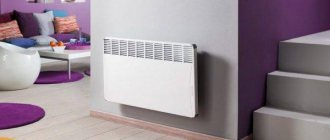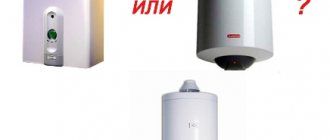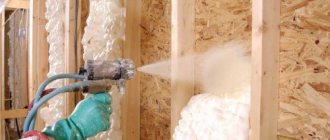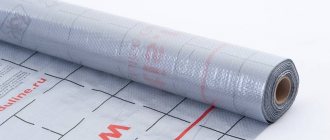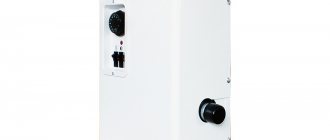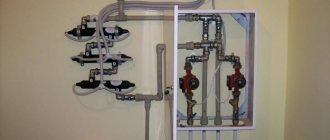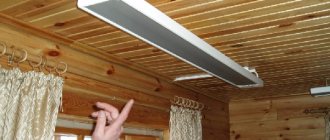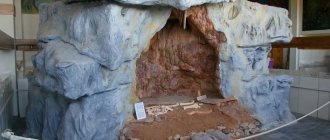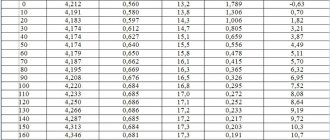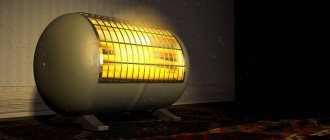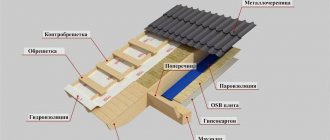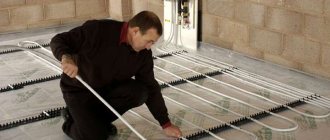Electric heating of a private home may seem unprofitable compared to gas, but this is not entirely true. It has many advantages:
- there is no need to obtain permits and approve the project, as is the case with gas;
- there are fewer installation costs, and some electrical systems can be installed by yourself;
- safety (when heating with gas, there is a danger of gas leakage and fire, as well as carbon monoxide poisoning);
- environmental friendliness - no combustion products;
- there are more options for choosing a heating system, whereas in the case of gas it is actually only water heating with a boiler and radiators.
In addition, electric heating is available wherever there are power lines (that is, 99% of the territory of Russia), and gas heating is only available where a gas pipe is connected.
Types of electric heating for a private home
Electric heating in a private home is now most often implemented using:
- "warm floor" systems;
- convectors and other local heaters;
- infrared heaters;
- water heating with electric boiler.
They can be used as sole heating systems or combined with each other.
To begin with, let's take a closer look at this type of electric heating in private homes, such as warm floors - the most comfortable and economical. Below we will consider the advantages and disadvantages of all types of heating.
Use of electrical energy for heating
The most common heat sources for heating homes are gas, electricity, coal or wood. Despite the availability of each, the use of a particular one is determined by a number of factors, such as: cost-effectiveness, location and intensity of use, safety. It is clear that the first two types of energy resources are the most in demand.
It should be noted right away that using electric heaters for heating is not the most budget option, since the cost of the equipment, as well as operating costs, are quite high. Therefore, it is often considered as an alternative when there are interruptions in the gas supply or it is not possible to carry out appropriate communications at all. But this heating method still has a number of undeniable advantages, among which are:
- universal availability;
- short terms and ease of installation;
- ease of control;
- compactness;
- absence of combustion products.
Classification of electric heating devices
Current heating devices powered by electricity can be classified as follows.
According to the installation method of the device:
- mobile (oil radiators, convectors);
- stationary (boilers, electric boilers and fireplaces, air conditioners, infrared heaters).
By type of heated coolant:
- air - heating of the space is carried out by heating the air (convectors, electric fireplaces, radiators, etc.);
- liquid – water, oil, antifreeze can be used as a coolant (electric boilers, boilers);
- solid-state (radiant) - heat from the source is transferred to some solid surface, which, in turn, heats the air in the room (radiant, infrared heaters).
By heating element type:
- tubular standard - used in all types of heating devices powered by electricity; can have a wide range of characteristics in terms of performance, power, etc.; are made of steel or titanium; Figure 1 - Tubular electric heaters
- tubular finned - used only for heating gas coolants, incl. air (convectors, thermal curtains); are usually made of structural or stainless steel; Figure 2 - Finned heating elements
- block (block of electric heaters) – required if it is necessary to increase the power of the device; coolants can be either liquid or any bulk material; Figure 3 - Electric heater block
- with a thermostat - the most common type of household heaters for heating with liquid coolant; made of steel, copper or nickel-chromium alloy. Figure 4 - heating element with thermostat
Let us briefly consider the most popular and in demand types of electric heaters.
Convectors
They are, as a rule, compact mobile devices that can be used both in city apartments and country houses as an additional or independent source of heat. Structurally, they can be floor-mounted or wall-mounted.
It should be noted that many convector models provide both options for use.
Figure 5 – Electric convector
The principle of operation is based on the fact that cold air, entering freely or forcefully (due to built-in fans) into the device and passing through heating elements (heating elements), rises up and exits through a special grille. Unlike many other types of electric heaters, it does not have any restrictions or special conditions for use.
Both externally and in terms of their operating principle, these devices are similar to conventional heating radiators and are widely used in offices, apartments, and private homes. These devices are a metal casing filled with mineral oil, which is heated using a heating element.
As a rule, oil radiators are floor-mounted, but they can differ in design: they can be open or closed (in such devices, the ribs of the sections are additionally covered with screens).
Figure 6 – Open type oil radiator
Figure 7 – Closed oil radiator
Closed radiators, unlike open ones, are safer and more efficient (due to the “fireplace” effect inside the housing).
Electrical "warm floor" systems
A warm floor is an electric heating system that is located under the floor covering (tiles, laminate, etc.) and heats it. When the system is turned on, the entire surface under which the heating cable or film is located is a continuous heating panel.
How it works. Heating systems "warm floor" consist of:
- thermal insulating layer (lowest);
- a thin heating cable or heating film laid on top of it;
- temperature sensors and thermostat.
A floor covering is laid on top of all this (in some cases - screed or plywood, fiberboard, and then a floor covering).
The cable is laid in strips over the entire heating area with a small distance between the strips. This ensures continuous heating without cold zones. The design of the film already provides for evenly distributed carbon heating elements, so it is laid continuously.
How does it work. The cable (or carbon strips in the film) heats up under the influence of the voltage applied to it and transfers heat to the floor covering located on top. The thermal control system monitors the air temperature in the room or the temperature of the floor heating and turns off/on the voltage in the cable (film). Note that infrared heating film heats the flooring not due to heat transfer, but due to infrared radiation - heating all surfaces in its path.
Advantages of heated floors:
- Economical heating. In traditional heating systems, heated air from convectors or radiators first rises to the ceiling, displaces the cold mass of air, it falls down, heats up - and so on in a circle. Thus, in order to achieve a comfortable temperature at the lower levels of the room, where a person is usually located, it is necessary to warm up the entire volume of air in the room. And in “warm floor” systems, first of all, the layers of air at the bottom of the room are heated, and evenly over the entire area; and only then the warm air rises.
- Thanks to the warm air in the leg area, a person feels comfortable even at a lower overall temperature in the room (1.5-2 °C lower). These two factors together can reduce heating costs by about 20%, and even more in rooms with high ceilings.
- Comfort. The well-known saying “keep your feet warm and your head cold” illustrates the healthy and comfortable distribution of temperature zones in a room. It should be warm at the bottom, cooler a little higher. In traditionally heated rooms, the opposite is true - your feet are cold, but your head is warm. Therefore, underfloor heating creates an optimal feeling of warmth in a person. In such a room there will be no cold zones (except perhaps under the ceiling) and drafts arising from the mixing of warm and cold air masses during convection.
- A warm floor allows children to run and play on the floor without the risk of catching a cold, while adults can relax directly on the floor or in low chairs. Pets located in the lowest zone of the room will also be comfortable.
- Less dry air. Since a smaller volume of air is heated and heating is carried out to lower temperatures, the relative humidity in rooms with heated floors is higher than when heating, say, radiators.
- Quick heating adjustment in each room separately, and not general for the entire heating system. This avoids situations where some rooms are too cool and others are too hot. Each room can maintain its own temperature, depending on the preferences of the owner or its purpose.
- Freeing up usable space and aesthetics. Radiators and convectors have to somehow fit into the overall style of the room, not to mention the fact that they occupy part of it and prevent you from arranging the furniture exactly as you would like. There are none in a room with a heated floor (or fewer of them if a combined heating system is used). This is a great solution if you want, for example, panoramic windows from the floor, or for small rooms where every centimeter is valuable.
Types and design of electric heated floors
Economical heating using underfloor heating is provided in several ways. This:
- heating cable;
- self-regulating cable;
- heating mats;
- infrared film;
- core heated floor.
Let's look at the design of each of these systems, their advantages and disadvantages, and what coatings they are best suited for.
Heating cable
The heating cable is a thin wire that is laid out on the surface under the floor at a certain distance between sections. It can be single-core - when laying it, you need to bring the end and beginning of the cable together at one point to close the circuit, and double-core, where the return cable is already provided for in the design.
For residential premises, a two-wire one is recommended - it produces less electromagnetic radiation.
Advantages:
- durability;
- good heat dissipation;
- suitable for rooms with a complex perimeter shape;
- small initial investment.
Flaws:
- increases floor height;
- complex installation (actually a major overhaul of the flooring);
- long commissioning (you need to wait until the screed dries);
- The floor does not warm up too quickly after switching on.
Suitable for installation only under:
- tiles,
- stone,
- porcelain stoneware
Self-regulating cable
The principle of operation and method of laying a self-regulating cable are similar to the principle of operation and method of laying a conventional heating cable. It has a flat shape, which allows you to reduce the height of the heating system. A significant advantage is the independent regulation of heat transfer depending on the floor heating temperature, thanks to a special design.
This self-regulation allows:
- do not be afraid of overheating of the cable if it overlaps or is close together;
- save on heating costs, as the cable is sensitive to changes in ambient temperature;
- place furniture on the surface above the cable without fear of overheating the floor or cable.
The only disadvantages of a self-regulating cable are the price (it is higher than that of a conventional heating cable) and a slightly shorter service life.
Recommended for installation under:
- tiles,
- stone,
- porcelain stoneware
May be suitable for installation under:
- parquet,
- wooden floors,
- laminate,
- linoleum.
Not suitable for carpet and textile floor coverings.
Heating mat
It is a thin heating cable attached to a special mesh. The solution or glue in which the mat is laid penetrates freely through the mesh and securely fastens it. In this case, the height of the screed or adhesive layer can be kept to a minimum.
Using a heating mat for a heated floor allows you to:
- reduce the height of the layer under the heating system;
- speed up and simplify installation;
- avoid errors in positioning the cable on the surface (it is already optimally secured on the mat);
- achieve rapid heating of the surface during operation (due to the minimum thickness of the screed or glue underneath).
The disadvantages include the low (compared to the heating cable) power of the system, since the cable is thin.
Recommended for installation under:
- tiles,
- stone,
- porcelain stoneware
May be suitable for installation under:
- parquet,
- wooden floors,
- laminate.
Infrared film
It is a thin film with applied carbon strips, to which voltage is applied via copper-silver contacts (also soldered into the film). It is the carbon strips that are the source of infrared radiation and heat the floor surface.
Advantages:
- efficiency;
- rapid heating of the floor by infrared radiation;
- easy installation;
- practically does not increase the height of the floor;
- suitable even for thin and soft floor coverings (carpet, linoleum);
- durability.
Flaws:
- relatively low heating power (compared to heating cables and thermomats);
- high price;
- When laying under carpet and linoleum, it is recommended to provide fiberboard or plywood under the finishing coating.
Previously, the disadvantages of infrared film also included the risk of fire when kinked. Now there is an anti-spark heating film on sale (for example, HOT-Film, South Korea), where such a danger is excluded.
Recommended for installation under:
- parquet,
- laminate,
- linoleum.
May be suitable for installation under:
- tiles,
- stone,
- porcelain stoneware,
- wooden floors,
- carpet
Rod heated floor
This is a new technology in our country. Represented, for example, by such a brand as Eco Ondol (South Korea).
The heating system of a rod heated floor uses steel and nichrome rods as a heating element, which are installed in the screed layer under the floor. The main advantage is that the rods heat the screed to a depth of 30 cm, turning it into a kind of heat accumulator.
System advantages:
- Economical. For 25 minutes of heating with rods, there is 1.5 hours of heat transfer from the heated screed.
- Durability (warranty – 50 years).
- Quick heating of the room.
- Low EMR.
The disadvantages include the high cost of the system.
Is heating only effective with underfloor heating?
Warm floors in a private house can be used as the only type of heating and as an addition to the main one.
As the main source of heat, it is suitable for small dachas and country cottages with good thermal insulation, located in areas with relatively warm winters (up to -10... -15 °C). In severe frosts, a heated floor alone will not be able to maintain a comfortable temperature in the room - because to do this, you will have to increase the heating of the floor, and it will become impossible to walk on it.
Therefore, in such cases, we recommend combining home heating with underfloor heating and, for example, an electric boiler. This allows:
- In mild cold weather, use floor heating, saving on heating, and in severe cold weather, additionally turn on the boiler;
- insure in case of temporary failure of one of the systems;
- install heated floors only in those rooms where increased comfort is needed - children's room, dining room, living room, bathroom, thus saving on the initial investment in this system.
Other types of heating
In addition to underfloor heating, electric boilers, infrared heaters, convectors and various local heaters - oil radiators, fan heaters, etc. are used for electric heating in private homes.
Convectors, fan heaters, oil radiators, etc.
Fan heaters and oil heaters are rarely used as the only heat sources in the home. They usually supplement the main heating. But a heating system is often completely built on convectors.
How it works. Convectors are located in each room, one or several pieces, usually on the coldest walls. Each has a regulator with which you can set the desired temperature. And the thermostat regulates the heating elements on and off to maintain it.
How does it work. The heating element of the convector heats the air around it, and the air in contact with the body of the device also warms up. Warm air rises, cold air moves in its place, and the convector heats the next “portion”.
Advantages:
- ease of system deployment;
- not too large initial investment;
- relatively quick heating of the room;
- possibility of local (in each room) temperature control.
Flaws:
- high energy consumption;
- suitable only for houses with good electrical wiring designed for such loads (1-2 kW for each convector);
- When dust gets on the heating element, it burns, releasing harmful substances and an unpleasant odor; it becomes uncomfortable to breathe in the room (usually this is called “oxygen is burned”).
Fan heaters and oil heaters work the same way and have similar advantages and disadvantages.
Infrared heaters
Infrared heaters are a relatively inexpensive and comfortable heating method.
How it works. Heaters are placed on the walls, under the ceiling or installed on the floor. Each heater is autonomous and has a manual power control.
How does it work. Infrared heaters emit infrared rays, which heat not the air, but the objects they hit. They, in turn, warm the air around them.
Advantages:
- do not burn dust;
- relatively inexpensive;
- infrared rays hitting a person create a feeling of warmth;
- economical if you do not aim to warm up the entire room.
Flaws:
- there will be cold and warm zones in the room (this can be an advantage);
- devices heat only the surfaces they are directed at;
- heating the entire room will require several heaters and high energy consumption.
Electric heating elements. Types and design
All kinds of electrical appliances for heating are widely used in everyday life in almost every home. The main component of such devices are electric heating elements (TEH) (Spiral).
There are only two types of heaters:
1. Open electric heating elements: Open type heaters include spirals. Spiral heating elements release heat through convection and radiation. They are basically suspended from a bracket made of electrically insulating material. There are also spirals placed in insulating grooves.
2. Enclosed electric heating elements:
- sealed. Sealed heaters include tubular heating elements. Electric heating elements operate on the basis of convection, radiation and conduction, converting electrical energy into thermal energy; - leaky. These are spirals and tapes in a protective sheath made of electrical insulating material. As protection, scaly ceramic beads can be used, placed directly on the spiral.
Features of heating coils
For the manufacture of heating coils, nichrome or fechral is used. Some companies produce spirals from Eurofechral. Different manufacturers produce heating elements in a zigzag or round shape. There are spirals equipped at the ends with threaded rods (screws).
Properties of nichrome spirals:
- Retains plasticity after cooling.
- High resistivity.
- They do not glow when heated.
- They do not consume oxygen.
- Excellent mechanical properties.
- Maintains properties during long-term use.
Nichrome spirals with a ceramic base can be removed repeatedly, and, if necessary, corrected and changed their shape, adjusting them to the required dimensions. Such heaters are used in everyday life, industry and other devices.
Properties of fechral spirals
- Highest heat resistance.
- Significant resistivity.
- Resistance to aggressive environments.
- No scale.
- Mechanical stability.
- Flexural strength.
- Long service life.
These spirals are used in electric furnaces in almost all industries and in other electrical appliances (heaters, electric stoves). These heating elements have a lower density, last longer and are cheaper than nichrome spirals.
Properties of fechral and spirals made of other multicomponent alloys:
- High resistivity.
- Uniformity of structure.
- Excellent resistance to various environments (vacuum, air, argon, etc.).
- High ductility.\
- Good creep limit.
- Long service life.
Such spirals last longer, have lower density, greater ductility and better surface quality than nichrome and fechral.
They are considered more reliable and durable, therefore they are used in devices designed to operate at high temperatures (1200С).
Advantages of open type heaters:
- Simple design.
- Fast heating.
- Ease of repair.
- Low cost.
Flaws:
- Low electrical safety.
- Risk of short circuits in the spiral turns.
- Possibility of mechanical damage.
There are also closed-type spirals; they are placed in a metal shell, the space of which is filled with powder as insulation. These elements take much longer to heat up, but they are more reliable and safer to use; the most common use of such elements is electric burners for electric stoves.
Features of heating elements: design and operating principle
Heating elements (tubular electric heating elements) represent a tube, inside of which there is a conductive thread or spiral located in the middle. The tube is usually made of metal, but there are devices with a glass or ceramic tube. Heating elements with metal tubes are designed for heating practically non-aggressive environments.
Glass is used for heating elements in industrial installations, i.e. for chemically highly aggressive environments. Tubes made of ceramic or other noble metals are very rare; they are made for special occasions. The tubes come in different diameters from 6 mm to 24 mm.
The thread is made of a thermoelectric alloy, can be nichrome or fechral. This part, well pressed into the core, has excellent resistance, so it heats up greatly when an electric current passes, but does not melt.
The spiral (thread) acts as a heater. The space between it and the tube is filled with a heat insulator with good thermal conductivity. Periclast (crystalline magnesium oxide MgO) is used as it. MgO according to GOST 13236–83, has high dielectric properties and resistance to high temperatures. The insulating layer prevents contact of the dielectric with the tube and transfers thermal energy to the surface as efficiently as possible.
Before entering the environment, thermal energy first passes through the dielectric and then through the stainless walls of the tube, heating water or air.
Tubular electric heating elements can operate under the following operating conditions:
- Liquid.
- Solid.
- Gaseous.
The heating element is equipped with a group of contact devices designed to turn it on. Conductive terminals are usually used as contacts, which are placed on insulating inserts.
Main details of the heating element:
- A tube.
- The heating element is a spiral or thread.
- Filler.
- Insulating layer.
- Contact devices.
This design can withstand long-term standard loads. In this case, voltage surges and short-term overloads do not greatly affect the operation of the heating element. Some groups of heating elements are equipped with additional parts, for example, thermal fuses or magnesium anode rods to extend their service life.
The differences between heaters concern not only the material used, but also the design and their purpose. Heating elements come in different lengths and diameters, are made of steel or titanium, and also have different electrical parameters.
Types of heating elements
- Finned heating elements (TENR) . These heaters are designed to heat air, which is why they are called air heaters. The material used to make them is stainless and structural steel. TENR is ribbed with tape, as well as stacked washers.
- Cartridge-type heating elements (TENP) . They are used to heat molds, therefore they are used in industrial installations. Made from polished stainless steel pipe, with contact terminals on one side. Some heating elements are equipped with a thermoelectric converter. Sometimes they are used to heat gas and liquid media.
- Electric heater block (TENB) . The blocks provide increased heating power for bulk and liquid substances, which is why they are often called water heating elements. They are made from different materials and different capacities. Flange fastenings are either threaded or bolted.
- Heating elements with thermostat . These electrical devices are used to heat water in any container of suitable volume with the ability to maintain a specific temperature (electric boilers and other equipment).
- Ring electric heating elements (KNE) . These devices are necessary for heating sprue bushings, spotlights, etc. Stainless steel is used to produce the shell. KNP can be supplied with an equipped thermocouple.
